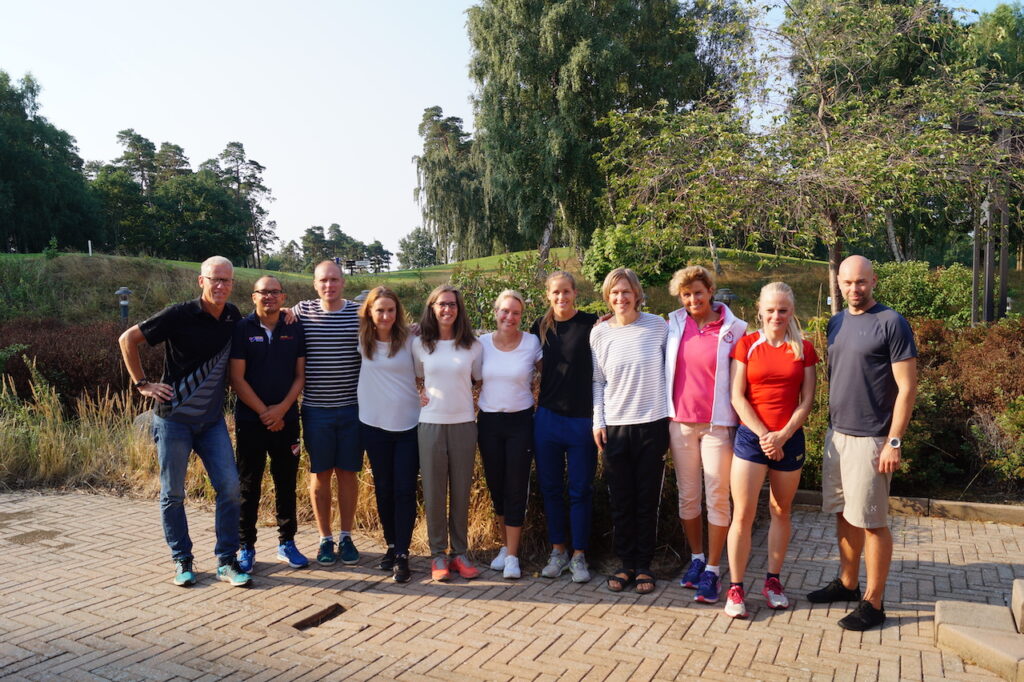You can find the full article here
Tell us more about yourself and the author team.
I am a Professor of physiotherapy at Lund University, Lund, Sweden. I lead the interdisciplinary research group Sport Sciences, and our research focuses on the prevention and management of musculoskeletal injuries/diseases, primarily injuries related to sport and exercise. The co-authors of this paper include several experts in sport and exercise medicine, sport psychology, health promotion and public health, participatory action research and/or handball from five countries: Sweden (Eva M Brodin, Sofia Bunke, Jennie Linnéll, Karin Moesch, Emme Adébo, Johan Ekengren, Simon Granér, Urban Johnson, Karolina Lucander, Ulrika Tranaeus) Denmark (Merete Møller), Norway (Grethe Myklebust), the Netherlands (Anne Benjaminse), and Australia (Alex Donaldson).


What is the story behind your study?
It is well established that injury prevention training effectively reduces musculoskeletal injuries in handball under controlled conditions. However, it is also known that such training is not widely or properly implemented or sustained in real-world sports settings. In this context, the “Implementing injury Prevention training ROutines in TEams and Clubs in youth Team handball (I-PROTECT)” project was initiated during a dialogue between researchers and end-users. End-users expressed that they wanted to use injury prevention training but needed help to do so.
I-PROTECT has an ecological participatory design incorporating the perspectives of multiple stakeholders (health beneficiaries, program deliverers, policymakers) throughout the project. Our first I-PROTECT project study explored the end-users needs and showed that they wanted to understand the importance, benefit, and principles of injury prevention training (why) and have a set of handball-specific exercises (what) to integrate within handball training (how and when).
In the next step, key stakeholder representatives underlined that they wanted researchers/handball experts to initiate the development of exercises and that end-users would test and evaluate exercises in practice. This approach is in line with action evaluation. In the present paper, we describe developing an injury prevention training program specifically for youth handball players, incorporating knowledge from coaches, players, and researchers/handball experts.
In your own words, what did you find?
End-users and researchers/handball experts co-created holistic injury prevention training specifically for youth handball players. A pilot program was generated, encompassing examples of handball-specific exercises, including physical principles of injury prevention (movement technique upper and lower extremities, respectively, and muscle strength) combined with psychological aspects (increase end-user motivation, task focus and body awareness) to integrate in handball practice warm-up and skills training.
What was the main challenge you faced in your study?
Although it was very valuable that coaches, players, and researchers/handball experts collaborated to co-create the program based on interdisciplinary research evidence and end-users perspectives, this approach was not without challenges. First, increased understanding of another discipline area requires extra time for reflection and rethinking. Second, it was challenging to develop handball-specific exercises incorporating both physical and psychological principles that could be integrated into different parts of handball practice. Third, youth handball is voluntary work for coaches and undertaken during the spare time of players, so end-users had limited time to participate despite their high interest in participating in the study.
If there is one take-home message from your study, what would that be?
Injury prevention training can certainly be co-created in a cyclical development process involving researchers from different fields and end-users, but bear in mind that it requires extra time and preparation, as well as continuous rethinking and growing knowledge within the team.